Image Credit: @Tracipang
For being one of the big three types of mechanical keyboard switches, clicky switches are often incredibly underrepresented in discussions about switches at large. Whether this is a function of them seemingly being sought after more by beginners or because of clickies’ less than stellar performance notes historically, this lack of adequate discussion often leads to newer users having a complete lack of understanding of what actually makes a clicky switch clicky and how to differentiate them. Pile on the fact that the recent year or so of releases have seen a massive uptick in the variations in clicky switch designs, and even just clicky switches on their own can be a daunting challenge for people to pull apart. In order to help establish a decent base of knowledge for people interested in clickies to start out with, I figured a brief overview of the two main types of clicky switches would be useful. (As for the other half dozen or so types, I’ll leave that exploration up to them!)
Click Jacket ClickiesFigure 2: Classic click jacket clicky switches including Razer Greens and Cherry MX Blue and Green.
Throughout all of the years of the mechanical keyboard hobby and the more recent, seemingly endless flow of new switch designs, the click jacket clicky switch still remains by and large the most common clicky mechanism. Almost ubiquitous among switch manufacturers which produce OEM switches for prebuilt brands, this iconic design is often referred to broadly by their ‘Blue’ color first started by Cherry but has since been copied by Gateron, Kailh, TTC, Outemu, and many more less famous brands. Aside from the iconic “Blue Clicky” switch, many newer users may also recognize click jacket style clicky switches in the form of Razer Greens, one of the most popular prebuilt gaming peripheral brands of all time. When not found preinstalled in prebuilt, ready-off-the-shelf keyboards from brands like Keychron, Redragon, Corsair, or Logitech, click jacket style clickies tend to be available among less premium offerings ranging anywhere from $0.25 to around $0.50 per switch depending on where they are being brought from.
Figure 3: Cherry MX Blue stem showing upper and lower halves of the clickjacket mechanism.
The click jacket style mechanism used in producing clicky sounds in switches is actually entirely driven by the stems used and their two-part design. The upper half of the stem, shown as the blue part in the image above, consists of the keycap mount, the center pole, and a series of guiders which hold the lower half in place. The lower half of the stem, shown in white, consists of the legs which interact with the leaves inside of the switch to register the keystroke, as well as guide rails on the sides which help to make sure the mechanism moves perfectly up and down within the housing. When pressed inwards, these two halves initially stay locked together until about halfway through the keystroke where the legs of the lower white half pass beyond the leaves of the switch. Once past the leaves, this lower white half drops and rattles around between the bottom housing of the switch and the upper blue part, producing what we recognize as that rattly, chaotic clicky noise iconic of this style of switches. While certainly good at producing all the noise that people could want in a mechanical keyboard switch, this mechanism is often not liked among more established community members because of the uncontrolled and fairly random nature of sounds that it can produce.
Click Bar ClickiesFigure 4: Popular modern click bar clickies including Kailh Box Navy and Jade and Kailh Arctic Fox V2.
While quite new compared next to the ancient click jacket style mechanism, click bar clickies have been gaining a lot of attention among clicky switch fans over the past few years. First introduced and currently championed by Kailh, new click bars with varying tones, pitches, and volumes are continuing to be released to this day in more premium, hobbyist-focused offerings. Older iterations of the click bar mechanisms, such as those in Kailh Box Whites, Jades, and Navies, are all still incredibly popular, lower priced options that are not only competitive with those modern premium offerings, but can even be found offered as prebuilt options for some more enthusiast-grade prebuilt brands. Given the older, more established to premium and fancy range offerings, click bar style switches from Kailh can range anywhere from $0.30 to $0.75 per switch depending on what exactly is being looked at. The most recent offerings as of 2023 also have prices that are inflated by increased LED support in the way of large LED-style condensers, as well.
Figure 5: Kailh Box Mute Jade bottom housing internal design showing location of click bar mechanism.
Unlike the click jacket style mechanism, click bars are incredibly intuitive and easy to understand. Usually located on opposite side of the bottom housing as the leaves used to generate a signal when the switch is pressed in, this style of clicky switch has a thin metallic pin spanning the length of the switch that is fixed at one end. When the stem of the switch is pressed inwards, a small outcropping built into the stem rakes across this pin, causing it to bend and then snap back into place, creating a clicky sound similar to what you might immediately think of in a pen spring. Given that the thickness, stiffness, and material of these click bars can all be varied rather easily, click bar clicky switches have a wide range of tones which are very distinctive from each other. As well, this style of mechanism is often more sought after by clicky switch fans as it produces more singular, sharp, and less discordant tones than the click jacket style mechanisms. They are also incredibly effective at pissing off coworkers or roommates as well, as a result of this.
Believe it or not, that simple introduction summarizes how the vast majority of clicky style mechanical keyboard switches out there right now operate. As you dig further into the depths about clicky switches though, you’ll likely encounter other niche styles such as snap springs, Alps-style click plates, Aristotle-style mechanisms, or any other number of niche designs which aren’t the most supported in the modern day. Regardless of whether or not you stick to the high-level stuff or get down into the nitty gritty details, if you’re interested in using clicky switches you absolutely must experiment. No two clicky switches sound exactly the same, and finding the sound your heart desires will take a few rounds of iteration. In that quest for the perfect clicky switch, though, it may help you do some more reading up to know what to look for, like my articles here on Drop on ‘Switch Marketing Terms’ and ‘The Who’s Who of Switch Manufacturers’.















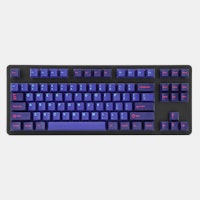
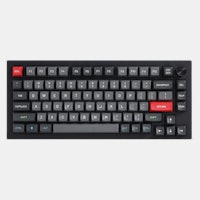
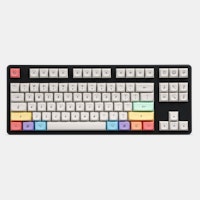
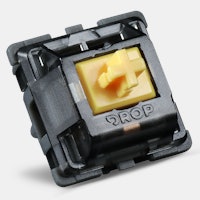

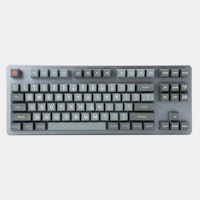
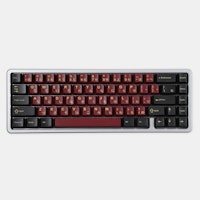
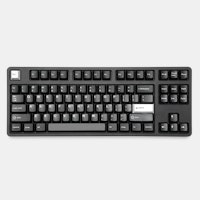
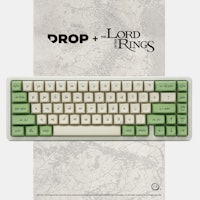





Believe it or not, that simple introduction summarizes how the vast majority of clicky style mechanical keyboard switches out there right now operate. As you dig further into the depths about clicky switches though, you’ll likely encounter other niche styles such as snap springs, Alps-style click plates, Aristotle-style mechanisms, or any other number of niche designs which aren’t the most supported in the modern day. Regardless of whether or not you stick to the high-level stuff or get down into the nitty gritty details, if you’re interested in using clicky switches you absolutely must experiment. No two clicky switches sound exactly the same, and finding the sound your heart desires will take a few rounds of iteration. In that quest for the perfect clicky switch, though, it may help you do some more reading up to know what to look for, like my articles here on Drop on ‘Switch Marketing Terms’ and ‘The Who’s Who of Switch Manufacturers’.